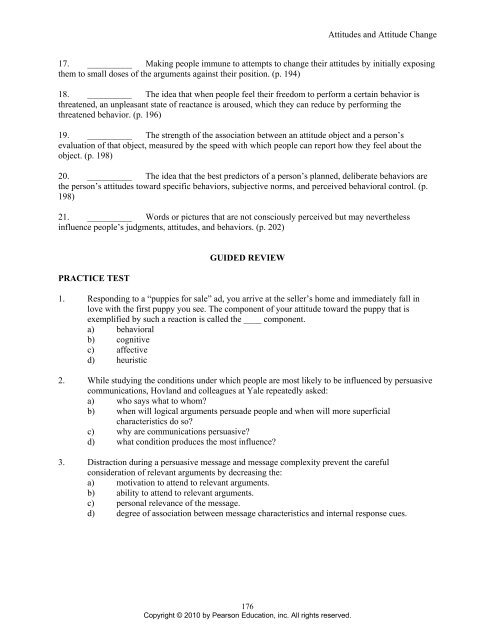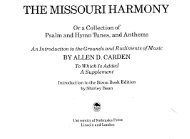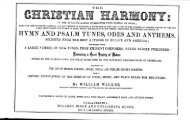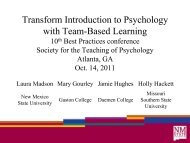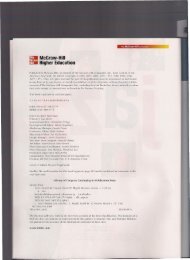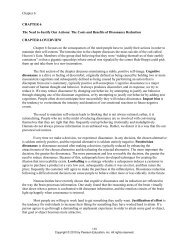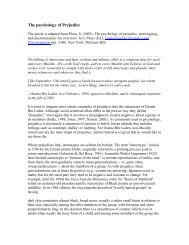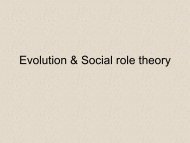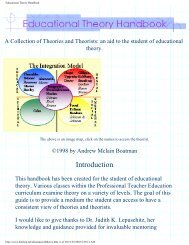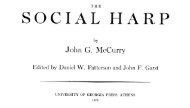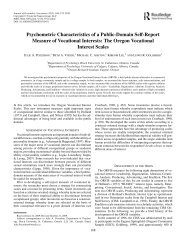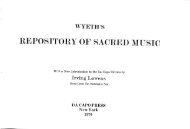Attitudes and Attitude Change CHAPTER 7 Attitudes and Attitude ...
Attitudes and Attitude Change CHAPTER 7 Attitudes and Attitude ...
Attitudes and Attitude Change CHAPTER 7 Attitudes and Attitude ...
You also want an ePaper? Increase the reach of your titles
YUMPU automatically turns print PDFs into web optimized ePapers that Google loves.
176<br />
Copyright © 2010 by Pearson Education, inc. All rights reserved.<br />
<strong><strong>Attitude</strong>s</strong> <strong>and</strong> <strong>Attitude</strong> <strong>Change</strong><br />
17. __________ Making people immune to attempts to change their attitudes by initially exposing<br />
them to small doses of the arguments against their position. (p. 194)<br />
18. __________ The idea that when people feel their freedom to perform a certain behavior is<br />
threatened, an unpleasant state of reactance is aroused, which they can reduce by performing the<br />
threatened behavior. (p. 196)<br />
19. __________ The strength of the association between an attitude object <strong>and</strong> a person’s<br />
evaluation of that object, measured by the speed with which people can report how they feel about the<br />
object. (p. 198)<br />
20. __________ The idea that the best predictors of a person’s planned, deliberate behaviors are<br />
the person’s attitudes toward specific behaviors, subjective norms, <strong>and</strong> perceived behavioral control. (p.<br />
198)<br />
21. __________ Words or pictures that are not consciously perceived but may nevertheless<br />
influence people’s judgments, attitudes, <strong>and</strong> behaviors. (p. 202)<br />
PRACTICE TEST<br />
GUIDED REVIEW<br />
1. Responding to a “puppies for sale” ad, you arrive at the seller’s home <strong>and</strong> immediately fall in<br />
love with the first puppy you see. The component of your attitude toward the puppy that is<br />
exemplified by such a reaction is called the ____ component.<br />
a) behavioral<br />
b) cognitive<br />
c) affective<br />
d) heuristic<br />
2. While studying the conditions under which people are most likely to be influenced by persuasive<br />
communications, Hovl<strong>and</strong> <strong>and</strong> colleagues at Yale repeatedly asked:<br />
a) who says what to whom?<br />
b) when will logical arguments persuade people <strong>and</strong> when will more superficial<br />
characteristics do so?<br />
c) why are communications persuasive?<br />
d) what condition produces the most influence?<br />
3. Distraction during a persuasive message <strong>and</strong> message complexity prevent the careful<br />
consideration of relevant arguments by decreasing the:<br />
a) motivation to attend to relevant arguments.<br />
b) ability to attend to relevant arguments.<br />
c) personal relevance of the message.<br />
d) degree of association between message characteristics <strong>and</strong> internal response cues.


